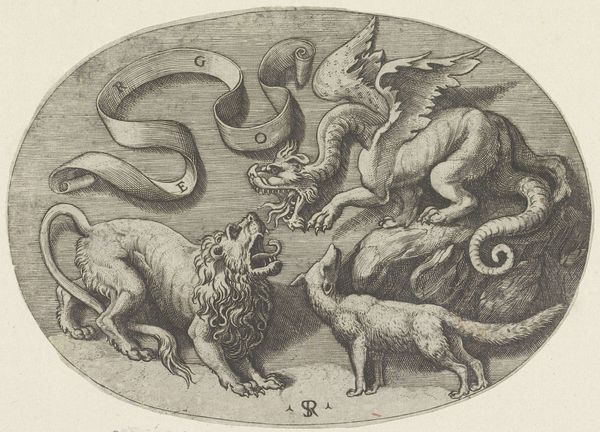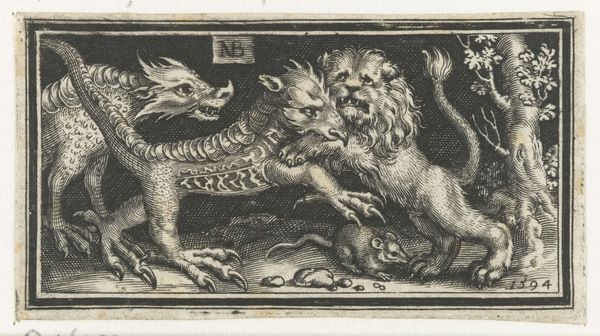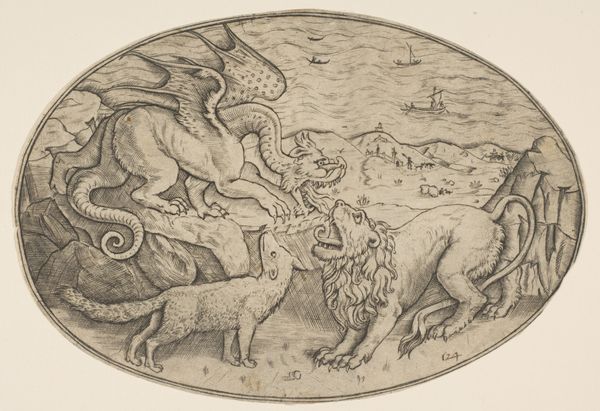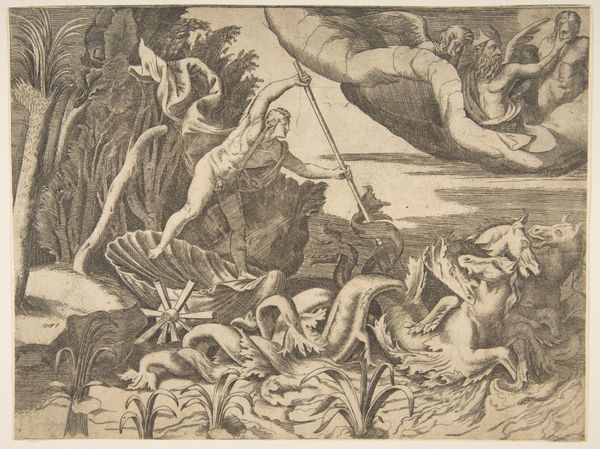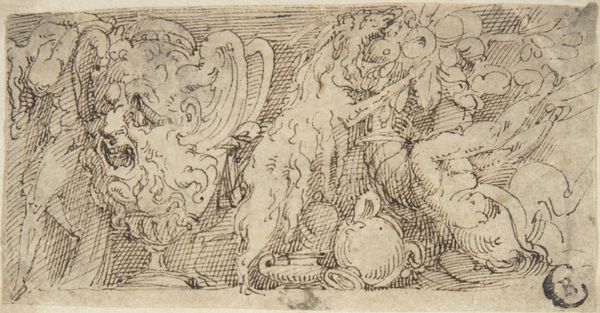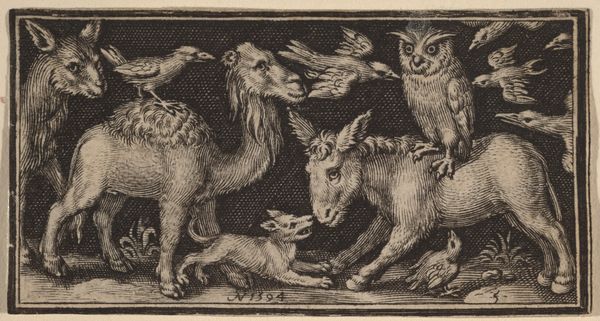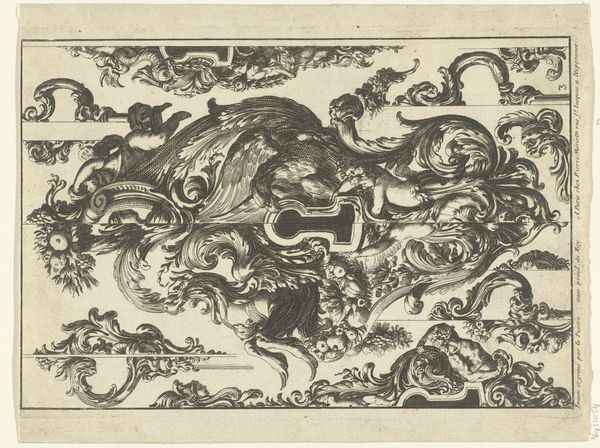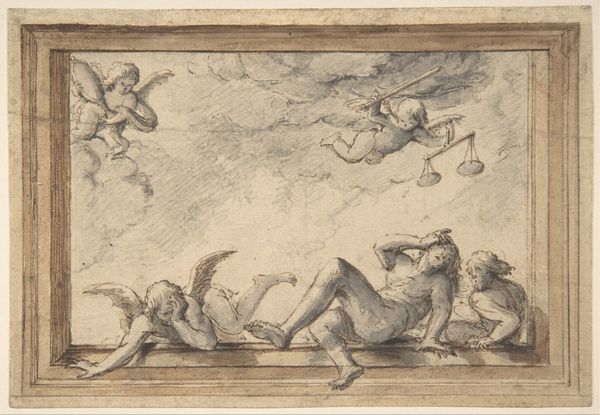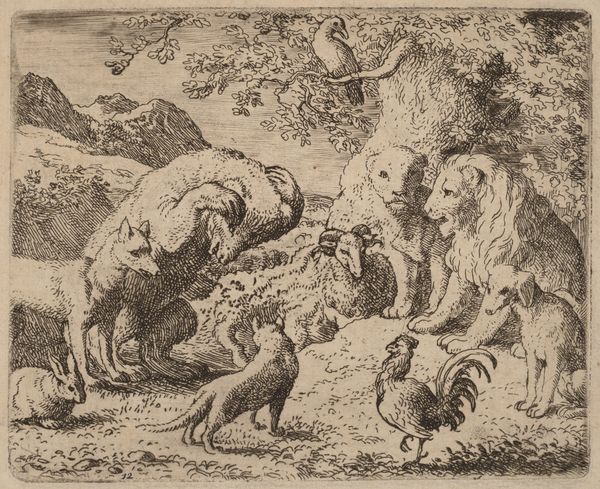
drawing, print, paper, engraving
#
drawing
#
narrative-art
#
animal
# print
#
figuration
#
paper
#
11_renaissance
#
france
#
history-painting
#
engraving
Dimensions: 113 × 158 (plate); 114 × 161 mm (sheet)
Copyright: Public Domain
Editor: This is Jean de Gourmont’s "Lion, Dragon and Fox," a French engraving from the 1520s or 30s, currently at the Art Institute of Chicago. The detail achieved in this print, using just line work on paper, is impressive. How does a piece like this resonate from a materialist perspective? Curator: Its materiality and method of production speaks volumes. Engraving, unlike painting, is a reproductive medium. This means Gourmont's work could reach a broader audience, circulating images and ideas more readily than a unique artwork. We must think about who had access to such prints and the impact it might have had on visual culture and literacy. Consider too the engraver's skill, the labor invested in each line, each detail meticulously carved into the plate, allowing the printing process to transfer ink to paper. What story does this print suggest when you consider it through the lens of labor? Editor: That's interesting. It makes me wonder who owned it, how they might have displayed it. I hadn't considered that printing democratized image consumption to some degree. The presence of "GRGE" too— what does it point to? Curator: Exactly. What did access mean at that time? These letters "GRGE," what product might be associated with them? It's an emblem representing ownership or possibly the engraving was meant for decoration to be traded for a material reward, raising important questions about value and exchange in the art market. By examining its circulation, materials, and social context, we get a deeper understanding of Renaissance art and its place in the world. Editor: I see your point! Thinking about the economic and social impact of this print really sheds light on its broader significance, and prompts new pathways to look into, from the engraver's production to trade connections in paper and print work. Thank you! Curator: Absolutely. Analyzing art this way allows us to move beyond purely aesthetic considerations. Focusing on art's labor, mode of production, and exchange offers invaluable historical perspectives.
Comments
No comments
Be the first to comment and join the conversation on the ultimate creative platform.
